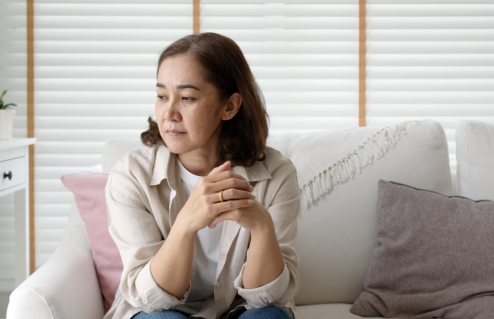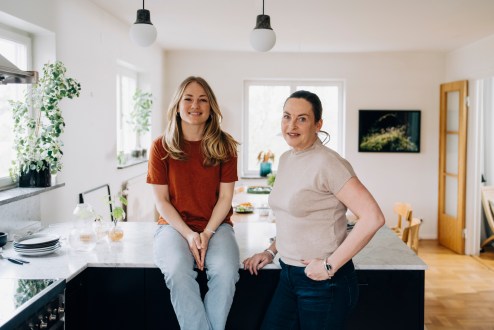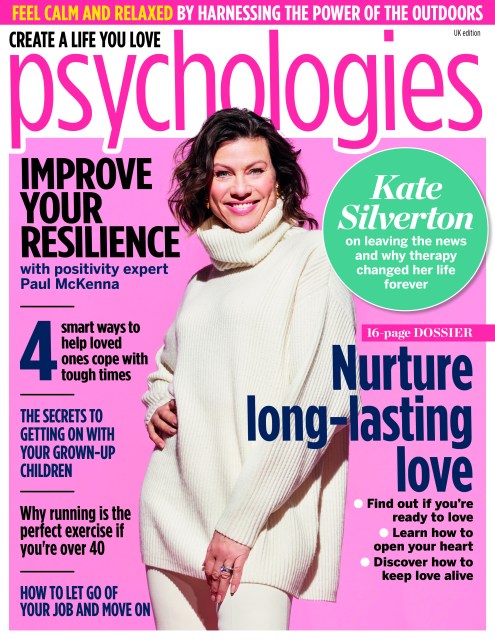The psychology of adult playtime
Ever found yourself feeling like you simply have no time for fun? Think again, says researcher Brigid Schulte, who argues that making time for play is a serious business that can bring huge benefits

Though I have spent a lifetime terrified of heights, I am standing on the laughably tiny platform high in the air at a trapeze centre in Brooklyn, New York, because Nadia Stieglitz and Sara Baysinger asked me to come with them on what they call a ‘playdate’.
The two women run an organisation they call Mice at Play – as in what the mice do when the cat’s away – and they want nothing less than to bring the joy of play back into a work-weary world. The organisation started in Stieglitz’s living room in 1998 when, consumed by work, the drudgery of keeping house, and the hard joy of raising young children, she felt the life draining out of her. The idea at first was to keep their brains stimulated. But they soon discovered that by making time to play, it was their souls they were saving.
With the zeal of missionaries, Stieglitz and Baysinger began researching the science of play and learning how women, in particular, don’t allow themselves to. They began planning regular ‘playdates’ and in recent years have tried boxing, bellydancing, synchronized swimming, sailing, made their own perfumes, and dressed up for a 1940s photo shoot. The playdates are designed to hurl women out of their heads and out of time, and to immerse mind, body, and soul in play.
‘We’re in a society where we have to justify play,’ Stieglitz said. ‘But play reminds you of your better self and how happy you can be. In play, there’s a wonderful lightness of being.’ ‘It blows our minds, what play can do for a person,’ Sara added. ‘It can transform them.’
The psychology of play
Active play, says Stuart Brown, a psychiatrist and founder of the National Institute for Play in California, is a timeless state of being essential to humans. It is also a state of mind, an attitude of curiosity and wonder. And neuroscience, Brown argues, is beginning to show how true that is. Play, he says, is what builds complex, skilled, responsive, socially adept and flexible brains, which in turn build complex, skilled, responsive, socially adept and flexible people and societies. Lizards, turtles, rats, birds, primates, most mammals, and even some fish play in their youth, but few animals continue to play into adulthood. Humans do.
As children, play is how we begin to understand ourselves, and the way the world works, without risk. As adults, play creates rich, new neural connections that fire together in new ways. In animal studies, life without play is bleak. Scientists have found that, deprived of play, young rats’ brains develop abnormally, just like rats with a damaged prefrontal cortex. And that, when presented with a cat odour, only rats who’d played eventually came out of hiding and began poking around, testing the environment.
‘The non-players never come out of hiding,’ Brown explains. ‘Their cortisol levels don’t come back down. They often die.’ In humans, Brown – who has taken more than 6,000 ‘play histories’ of people – finds that those who do not play are often joyless, workaholics and, at their core, depressed. What he calls ‘play deprivation’ tends to set in just as humans hit adolescence. Men maintain at least a semblance of play through sport, either actively playing or watching it. Women tend to lose it entirely. ‘There’s just this huge sense of loss,’ he says. ‘The lament that there’s no time to play is intense and almost universal. But most all of us have a play nature. And it’s within our capacity to get it back.’ To help people reclaim their playful natures, Brown takes them back to their earliest memories of play, to remember what they loved doing as children so they can figure out how to build on it as adults. Not long after I spoke to Brown, someone asked me when was the last time I’d really played. I thought back. When did I stop building Barbie houses out of our old red encyclopaedias? Climbing that enormous tree in our neighbour’s back garden? Turning cartwheels? When did the daring feats of capture the flag and the rough-and-tumble games of British Bulldog out under the streetlights on warm summer nights turn into spin the bottle and truth or dare? ‘Oooof. I don’t know. When I was 10 or 11 years old?’ I said. ‘Maybe 12?’
Play is out of fashion
In the modern world, work has become like a religion, say leisure scholars like Benjamin Hunnicutt, giving people a sense of identity and purpose. Being busy has become a way of showing high status. Leisure time, what the ancient Greek philosophers held as the aim of ‘the good life’, is seen as silly, unproductive and useless, as are other unproductive states, like sleep.
Professor Jonathan Gershuny, an eminent time-use researcher at Oxford, explains that throughout human history, leisure time – the idle, often playful and uninterrupted hours that have led to some of the greatest innovations, art, philosophy and discoveries of civilization – was for men only. Women’s time has always been too fragmented.
Sociologist and economist Thorstein Veblen, who wrote the influential Theory Of The Leisure Class in 1899, dispensed with women on page two – who, as part of the ‘inferior’ class, were supposed to do the drudge work of society.
Professor Eileen Green, in her seminal work titled Women’s Leisure, What Leisure? (Palgrave Macmillan, £29.99) studied women’s free time in Sheffield in the 1980s. She and her co-authors found that women felt guilty about taking time for or spending money on themselves. ‘Their husbands, when we asked how they felt about their wives having independent leisure, said it was all right once in a while, but if they did it very often, the men would feel there was something wrong with the marriage,’ Green told me. ‘But the husbands said having leisure for themselves was part of what being a man was all about.’
Other leisure scholars have found that purposive and industrious pursuits like quilting bees, knitting circles, gardening, book clubs even, have been the only acceptable form of leisure for women for centuries. True to form, Stieglitz and Baysinger have found the most popular playdates are always the more ‘productive’-sounding ones on nutrition or exercise. ‘It’s much more difficult to promote something that’s just pure play,’ Baysinger says. ‘There is just this huge guilt.’
Women tell Stieglitz and Baysinger that they feel they aren’t entitled to have leisure time. They feel they have to earn it first by getting to the end of the to-do list. Which never comes. Often, women say they’re too exhausted to do much more than collapse at the end of the day and turn on the TV, the weary modern world’s main pastime. ‘But really, I think they’re afraid,’ Stieglitz says. ‘They’re afraid of what having free time to themselves would feel like.’
Was I afraid? Afraid, perhaps, that stripped of work, of the responsibilities of family, and my never-ending to-do list, I didn’t know who I would find? And so, after putting off playtime for months, I agreed to come on the next Mice at Play playdate… the Flying Trapeze. I groaned. Just behind me in the line, a woman said she craved playtime after her first playdate, rock climbing, had reminded her of how much she loved to climb trees as a girl. ‘It’s like I came back to myself,’ she said.
In what feels like achingly slow motion, I loosen the death grip of my left hand from the platform support and hesitantly reach for the trapeze bar. In midair, it’s surprising how weightless a body feels. By the end of the evening, you’ve jumped from the platform a handful of times and survived. You’ve stopped screaming with every swing. Your hands tremble, not with fear any more but with a weird excitement that feels like your skin has been drinking coffee all day. Upside down, whooshing backward through the air, you arch your back and reach out with your hands. So this is what it feels like to fly.
Overwhelmed: Work, Love And Play When No One Has The Time by Brigid Schulte (Bloomsbury, £12.99) is out now
More inspiration:
Read Colour your life by Jackee Holder on Lifelabs









